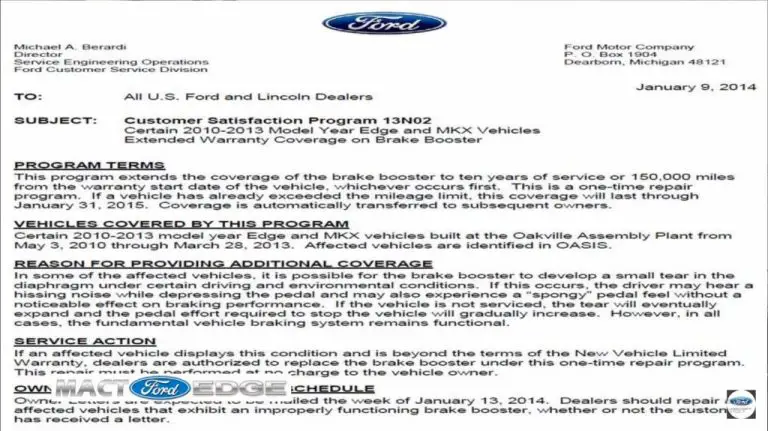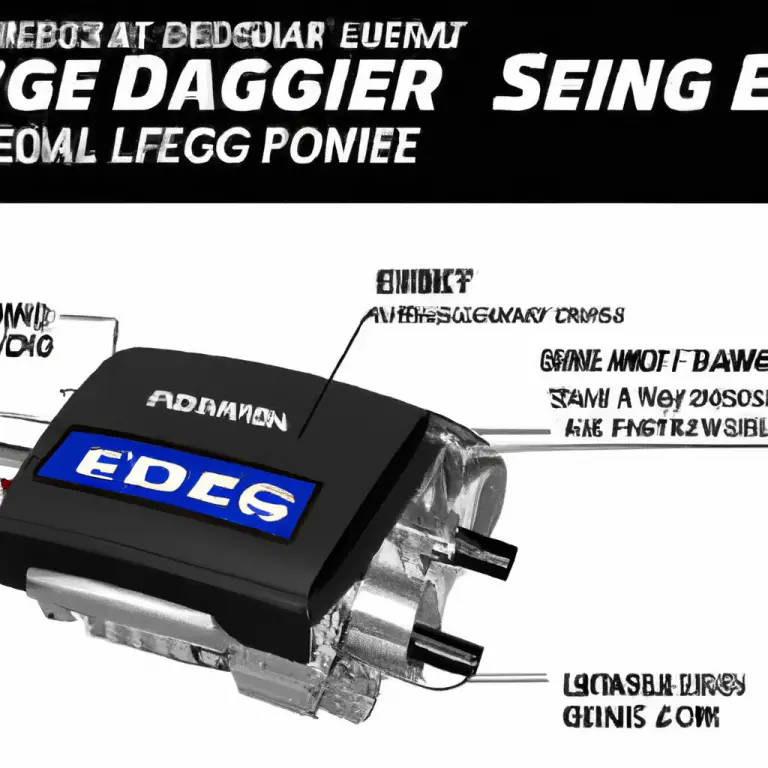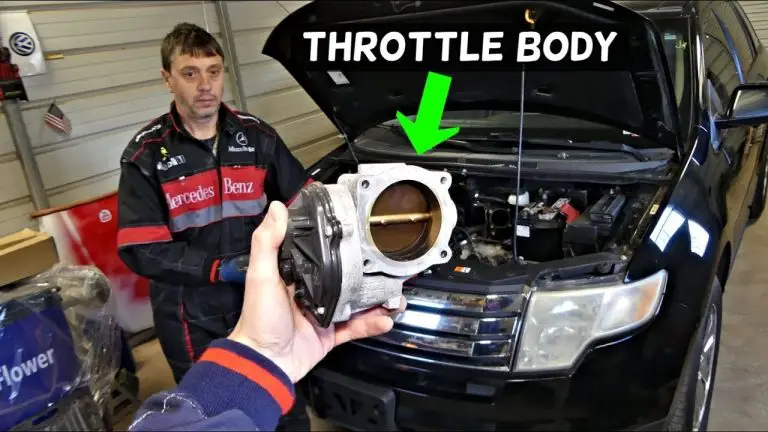Will My 5.4 Ford Run Without Catalytic Converter
Yes, a 5.4 Ford will run without a catalytic converter. However, it is illegal in most jurisdictions to remove or disable emissions control equipment from a vehicle.
Additionally, running your vehicle without a catalytic converter will cause it to pollute the air significantly more.
Catalytic converters are designed to reduce harmful emissions from gasoline-powered vehicles. They work by converting carbon monoxide, nitrogen oxides, and unburned hydrocarbons into less harmful gases, such as carbon dioxide and nitrogen.
Without a catalytic converter, your vehicle will emit much higher levels of these pollutants, which can contribute to smog, acid rain, and other environmental problems.
If you are considering removing your catalytic converter, I urge you to reconsider. It is not worth the environmental and legal risks.
If you are having problems with your catalytic converter, the best thing to do is to have it repaired or replaced.
Cars Without Catalytic Converters: What You Need to Know
Run poorly:
A car without a catalytic converter will run poorly because the unburned hydrocarbons and other pollutants can clog the oxygen sensors and other engine components. This can cause the engine to misfire and run inefficiently.
Pollute:
A car without a catalytic converter will emit much higher levels of carbon monoxide, nitrogen oxides, and unburned hydrocarbons. These pollutants can cause a number of health problems, including asthma, bronchitis, and heart disease. They can also contribute to smog, acid rain, and other environmental problems.
Waste gas:
A car without a catalytic converter will waste gas because the engine will not be able to burn the fuel as efficiently. This will lead to reduced fuel economy and increased emissions.
Have poor fuel economy:
As mentioned above, a car without a catalytic converter will waste gas, which will lead to reduced fuel economy.
Have uneven acceleration:
The unburned hydrocarbons and other pollutants that are emitted without a catalytic converter can cause the engine to misfire, which can lead to uneven acceleration.
Be loud:
Removing the catalytic converter will make the exhaust louder and give the engine a roaring or rumbling sound. This is because the catalytic converter acts as a muffler to reduce the noise of the exhaust.
Have less back pressure, which can mean more power:
This is true, but the increase in power is usually minimal and does not outweigh the other negative effects of running a car without a catalytic converter.
Recirculating unburned emissions into the engine:
This can happen if the exhaust manifold is not properly sealed. When unburned emissions are recirculated into the engine, they can cause the engine to run poorly and produce even more emissions.
Destroying the catalytic converters:
Even if you have new catalytic converters installed, running a car without a catalytic converter can quickly destroy them.
This is because the unburned hydrocarbons and other pollutants can clog and damage the catalytic material inside the converter.
Fouling the spark plugs:
The unburned hydrocarbons and other pollutants can also foul the spark plugs, which can cause the engine to misfire and run poorly.
Roaring or rumbling engine:
Removing the catalytic converter can make the exhaust louder and give the engine a roaring or rumbling sound. This is because the catalytic converter acts as a muffler to reduce the noise of the exhaust.
Overall, running a car without a catalytic converter is not a good idea. It is illegal in most jurisdictions, and it can cause a number of problems, including reduced performance, increased emissions, and damage to the engine.
The Ultimate Guide to Replacing Your Catalytic Converter
Catalytic converters play a crucial role in reducing harmful emissions from your car. Over time, they can wear out or become damaged, necessitating a replacement. Whether you’re a DIY enthusiast or just curious about the process, this guide offers a comprehensive look at replacing a catalytic converter.
Required Tools and Materials
Ensuring you have the right tools and materials at hand before you begin is key to a smooth and efficient replacement process. Below is a structured table to offer a quick overview:
| Item | Description |
|---|---|
| Jack and Jack Stands | Essential for lifting and securing the vehicle, providing safe access to the undercarriage. |
| Wrench or Socket Set | Utilized for removing and securing nuts and bolts during the replacement process. |
| Sawzall or Reciprocating Saw | Required if the catalytic converter is welded in place and needs to be cut out. |
| New Catalytic Converter | The replacement part. Ensure it is compatible with your vehicle’s make and model. |
| Gaskets and Clamps | For securing the new converter and ensuring a tight seal to prevent leaks. |
| Penetrating Oil | Aids in loosening rusted or tightly-fixed bolts, making them easier to remove. |
Step-by-Step 5.4 Ford Catalytic Converter Replacement Guide.
Step 1. Setting the Stage
Positioning the Car
- Ensure that you park on a level surface to avoid any unwanted movement during the process.
- Engage the parking brake firmly for an additional safety layer.
Cooling Down
- Allowing the engine to cool is crucial to avoid burns, as the exhaust system retains heat for quite some time after the engine is turned off.
Step 2. Safety First
Lifting the Vehicle
- Place the jack under the vehicle’s designated lift point (refer to the vehicle manual) and raise it off the ground.
- Securely position the jack stands under the vehicle and gradually lower the car onto the stands.
Safety Check
- Ensure the car is stable by gently shaking it and confirming it is securely placed on the jack stands.
Step 3. Spotting the Converter
Locating the Component
- The catalytic converter is typically found along the exhaust pipe, between the engine and the muffler.
Identification
- Look for a large, oval, or rectangular metal component that is bolted or welded along the exhaust pipe.
Step 4. Preparing for Removal
Applying Penetrating Oil
- Generously apply penetrating oil to the bolts holding the converter in place.
- Allow it to sit for several minutes to effectively loosen the bolts.
Preparing the Saw
- If welded, ensure your saw is in working order and ready to cut through the metal safely and efficiently.
Step 5. The Removal
Unbolting the Converter
- Using a wrench or socket set, carefully undo the nuts and bolts.
- Keep them safely aside if they will be reused.
Cutting if Needed
- If the converter is welded, carefully use the saw to cut it free, being cautious not to damage any surrounding components.
Step 6. Installing the New Converter
Positioning
- Carefully position the new converter, ensuring it aligns correctly with the exhaust pipe.
- Ensure that it is oriented correctly, with any airflow indicators pointing in the direction of exhaust flow.
Securing in Place
- Attach using new gaskets and clamps, and either bolt into place or weld, depending on the original setup.
Step 7. Wrapping Up
Rechecking and Securing
- Ensure all bolts are tightened and that the converter is securely in place.
Safety Removal
- Cautiously remove the jack stands and lower the vehicle back to the ground.
Step 8. Final Checks
Visual Inspection
- Perform a visual check to ensure everything appears securely in place and properly aligned.
Start and Listen
- Start the engine and listen for any unusual noises or signs of leaks.
- Take a short drive and observe if there are any noticeable changes in vehicle performance or any warning lights on the dashboard.
The cost of replacing a catalytic converter
The cost of replacing a catalytic converter can vary depending on a number of factors, including the make and model of your car, the type of catalytic converter that you need, and the labor costs in your area.
In general, the cost between $945 and $2,475 to have a catalytic converter replaced. The cost of the catalytic converter itself can range from $300 to $1,650. Labor costs typically range from $70 to $130 per hour.
4 Tips for Saving Money on Catalytic Converter Replacement
Here are 4 tips for saving money
- Get multiple estimates from different mechanics before choosing one.
- Ask about any discounts that may be available.
- Consider buying a used catalytic converter.
- Replace the catalytic converter yourself.
Can Removing the Catalytic Converter Extend the Life of a Ford 5.4 Engine?
Removing the catalytic converter from a Ford 5.4 engine is not recommended for longevity. The catalytic converter plays a crucial role in reducing harmful emissions, ensuring optimal engine performance, and complying with environmental regulations. Modifying or tampering with the exhaust system can negatively affect the engine’s performance and potentially damage other components. It’s advisable to follow regular maintenance and service schedules as per ford 54 engine longevity tips for ensuring a long and healthy engine life.
Does Removing the Catalytic Converter Affect the Number of O2 Sensors in a Ford F150?
Removing the catalytic converter in a Ford F150 may impact the number of O2 sensors in the vehicle. The o2 sensors in ford f150s are crucial components that monitor the exhaust gases. If the catalytic converter is removed, it can disrupt the proper functioning of the O2 sensors, leading to potential issues with engine performance and emissions.
8 Pro Tips for maintaining your catalytic converter
Here are 8 tips for maintaining your catalytic converter:
1. Get your car’s oil changed regularly.
Dirty oil can clog the catalytic converter and reduce its effectiveness.
2. Use high-quality fuel.
Low-quality fuel can contain impurities that can damage the catalytic converter.
3. Avoid driving over rough terrain.
Bumps and potholes can damage the catalytic converter.
3. Have your car’s exhaust system inspected regularly.
A mechanic can check for any damage to the catalytic converter and make sure it is working properly.
4. Avoid using fuel additives.
Some fuel additives can damage the catalytic converter.
5. Allow your car to warm up before driving.
This will help to reduce the amount of unburned fuel that enters the catalytic converter.
6. Drive smoothly.
Avoid sudden acceleration and braking. This can put extra stress on the catalytic converter.
7. Have your car’s oxygen sensors checked regularly.
Oxygen sensors play an important role in regulating the air-fuel mixture in the engine. If the oxygen sensors are not working properly, it can damage the catalytic converter.
By following these tips, you can help to extend the life of your catalytic converter and keep your car running smoothly.
Conclusion
In a nutshell, while your 5.4 Ford might chug along without a catalytic converter, it’s not the best route for your car or our planet. Think of the catalytic converter as the unsung hero under your car’s hood, keeping the air cleaner and your ride smoother. So, before you consider going without one, remember the bigger picture. It’s always wise to stay informed, make smart choices, and drive responsibly. Safe travels!







